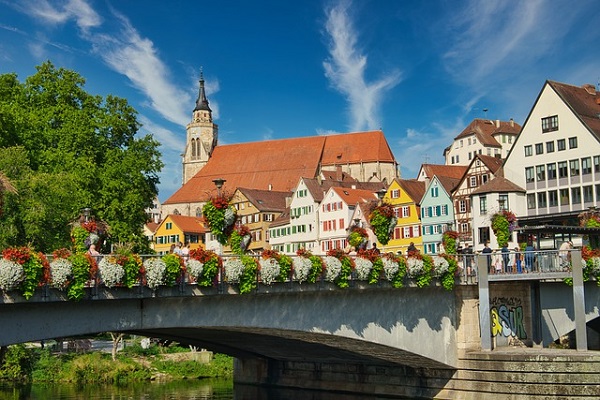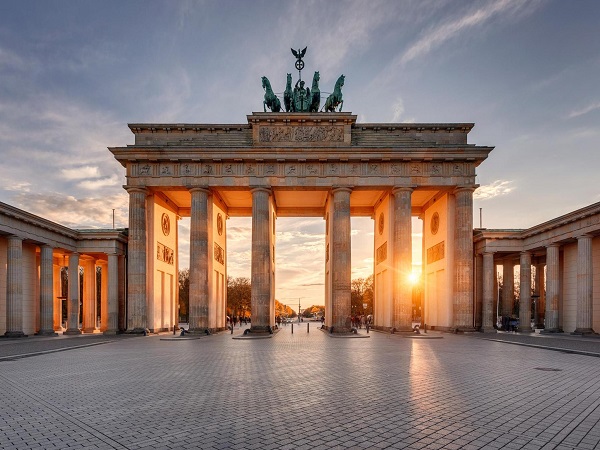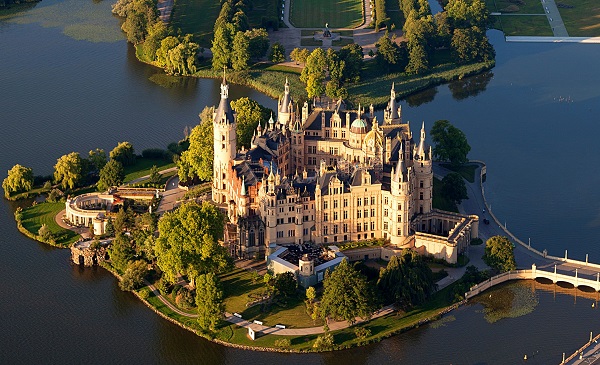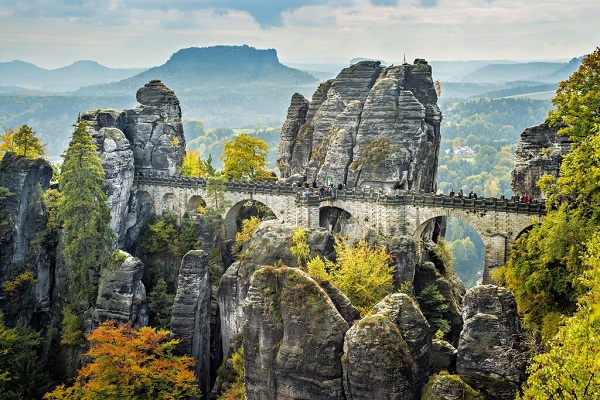Germany is the fifth-largest country in Europe with an area of 357,022 square kilometers. Germany has three big cities - Berlin, Hamburg, and Bremen - and 13 regions: Baden-Württemberg, Bavaria, Brandenburg, Hesse, Mecklenburg-Western Pomerania, Lower Saxony, North Rhine-Westphalia, Rhineland-Palatinate, Saarland, Saxony, Saxony - Anhalt, Schleswig-Holstein and Thuringia. Germany shares borders with nine other countries: Denmark, Poland, Czech Republic, Austria, Switzerland, France, Belgium, Luxembourg, and the Netherlands.
Below is general information about each state in Germany.
Area: 35.751 km2
Capital: Stuttgart
Population: 11 million people
Baden-Württemberg is located in the southwestern of Germany. The capital and largest city in the state is Stuttgart. The forests and lakes are popular landscapes of this state. Baden-Württemberg's Danube Lake is the second-largest lake in Europe.
Despite owning big cities such as Stuttgart, Freiburg, Mannheim and Karlsruhe,-Württemberg is still known as a rural area because agriculture and forestry are the main economic source here.

A corner of Tübingen - a traditional university city in central Baden-Württemberg
Area: 70,550 km2
Capital: Munich
Population: 12.9 million people
In terms of area, Bavaria (Bayern) is the largest province in Germany. The capital of Bavaria and the largest city in the state is Munich (or Munich). Although it was an agricultural region about 50 years ago, nowadays, Bavaria is one of the most developed regions in Europe, with many high-tech and industrial companies.
Despite its development, the province has not lost its original traditions, which give Bavaria its diversity. Thanks to that, the tourism sector is very developed here. In addition, this land has experienced many historical periods of Germany, bearing in it historical traces to this day.
There are many castles which look like they’ve been plucked right out of fairy tale stories, wonderful natural landscapes like the Alps and other tourist attractions in Bavaria.
Area: 891km2
Capital: Berlin
Population: 3.4 million people
Berlin is one of the three largest cities in Germany and is also the capital of this country. Berlin is located in the northeast of Germany, established in the 13th century. In addition to being an economic and political center, Berlin is also becoming a famous tourist destination worldwide. The great attractions you can find in this city include the Brandenburg Gate, Berlin cathedral, Berlin TV tower, etc.

Brandenburg Gate is Berlin's most famous landmark. A symbol of Berlin and German division during the Cold War
Thanks to modern infrastructure and other ideal conditions, Berlin is a perfect place to do business. Moreover, this city is the connection between Western and Eastern Europe because of its favorable location.
Area: 29,478 km2
Capital: Potsdam
Population: 2.5 million people
Brandenburg is located in Northeastern Germany and surrounds all Berlin capital. It is the 5th largest state in Germany. The capital and largest city of this state is Potsdam.
The area is known for its breathtaking natural scenery and several UNESCO heritage sites. If you have a chance to visit Brandenburg, don't miss the Beech Forest. In addition, buildings with a renaissance style still remain in the architecture in Brandenburg.
Area: 419 km2
Capital: Bremen
Population: 680,000 people
Known as Bremen for short because this is also the capital and the largest city in the state. The Free State of Bremen, Hanseatic, is located in northern Germany. Its capital is considered the largest city in Northern Germany, and it has one of the largest ports in Germany. Bremen is also a cultural center with many museums.
Area: 755.22 km2
Capital: Hamburg
Population: 8 million people
Hamburg is the 2nd largest city in Germany and the 8th largest city in Europe. It is also one of the largest ports in Europe. In summer, the port city is warm with an average temperature of 17 degrees and in winter, it’s around 2 degrees Celsius. Hamburg is one of the largest industrial centers in Germany, mainly known for its copper, chemical, and shipbuilding industries.
Area: 21,114 km2
Capital: Wiesbaden
Population: 6 million people
Hesse is located in the central west of Germany. Geographically, Hesse is a plateau, with the highest peak at 950m in Wasser. Electricity, textiles and steel production are among the growing industries in this state.
Area: 47,641 km2
Capital: Hanover
Population: 8 million people
Lower Saxony is the second-largest state in Germany, which is located in the northwest of Germany. The largest city and also the capital of this state is Hannover. Winter in Lower Saxony is not too cold, while summer is warm. In contrast to most other states in Germany, agriculture is the main economic source of Lower Saxony. Lower Saxony also possesses many unique natural landscapes, attracting a large number of tourists.
Area: 23,174 km2
Capital: Schwerin
Population: 1.6 million people
Mecklenburg-Vorpommern is a state located in Northeastern Germany. Hills, lowlands and 1,700 lakes are main terrains here. Mecklenburg-Vorpommern also owns several UNESCO sites. Tourism is one of the most developed economic sectors in this region, especially the 2,000km Baltic coastline.

A breathtaking view of Schwerin Castle in Schwerin city, Mecklenburg-Vorpommern state
Area: 34,084 km2
Capital: Düsseldorf
Population: 6 million people
The capital of North-Rhine Westphalia is Düsseldorf, while the largest city is Cologne. North-Rhine Westphalia is covered with forests. Chemical production remains the most profitable economic sector in this region.
Area: 19,846 km2
Capital: Mainz
Population: 4 million people
Rhineland-Palatinate is located in Western Germany, bordering three different countries: France, Belgium and Luxembourg. Their capital and largest city is Mainz. Geographically the Rhineland-Palatinate is part of the glacial massif, and it has an average elevation of 400 to 600 meters above sea level. Their GDP is generated mainly from chemical production, trade, transportation, and agriculture.
Area: 2,569 km2
Capital: Saarbrücken
Population: 180,000 people
Saarland is located in the west of Germany. Its capital and largest economic center is Saarbrücken city, located near the border with France. This area has a high economic development thanks to coal mining. The steel and iron manufacturing industries are also very profitable for the local economy. Saarland has a highly developed infrastructure, which is key to maintaining trade links with partners in neighboring countries and French cities.
Area: 18,413 km2
Capital: Dresden
Population: 4 million people
Saxony is located in the easternmost part of Germany. In this location, Saxony shares international borders with Poland and the Czech Republic. Dresden is the capital of Saxony, but the largest city of the state is Leipzig. Much of its landscape consists of hills and high mountains, except for a small part of land in the north. Microelectronics, manufacturing and mining account for the largest share of the economic contribution. Agricultural resources are also important here. Thanks to these unlimited resources, Saxony attracts many investments from the government and private investors.

The ravines and table mountains found in the south of Saxony are contrasted with the rolling hills, farmlands, and wineries in the north
Area: 20,447 km2
Capital: Magdeburg
Population: 2.4 million people
Saxony-Anhalt is located in the east-central part of Germany. The capital of the state is Magdeburg city. The terrain is mainly mountainous. Thanks to its fertile soil and mild climate, agriculture is one of the strongest economic sectors in the region. Important industries in Saxony-Anhalt include the automotive, renewable energy and food industry.
Area: 15,761 km2
Capital: Kiel
Population: 2.8 million people
Schleswig-Holstein is the northernmost part of Germany. The capital of the state is Kiel, while the important cities of this region are Lübeck and Flensburg. Geographically, the state has great contrast. There are highlands in the middle, hills in the eastern and beautiful cliffs along the Baltic coast in the north. Shipbuilding, paper industry, machine building and electrical engineering are the most important sectors of the local economy.
Area: 16,171 km2
Capital: Erfurt
Population: 2.3 million people
Located in central Germany, the capital of the state is Erfurt city, while other important urban centers are Jena, Gera and Weimar city. Compared to most states in Germany, Thuringia is relatively poor. Its industry is heavily dependent on metalworking, electrical, optical equipment, textiles, and biotechnology.
Tags: German states, Germany, German laws, 16 German states, Berlin, state capital, state population, state area